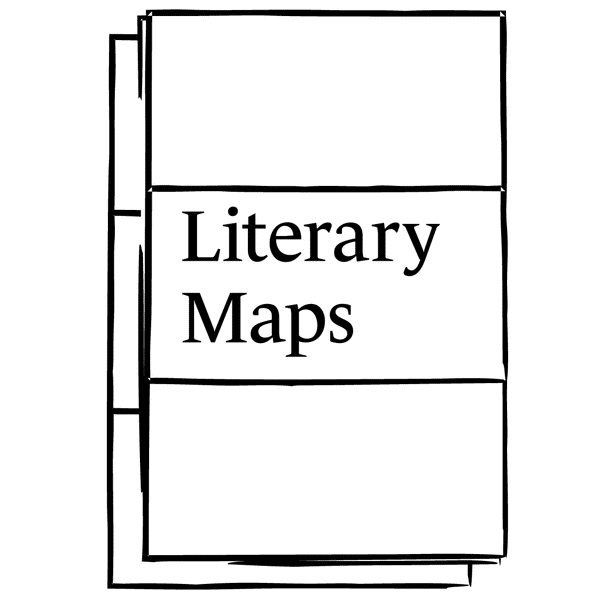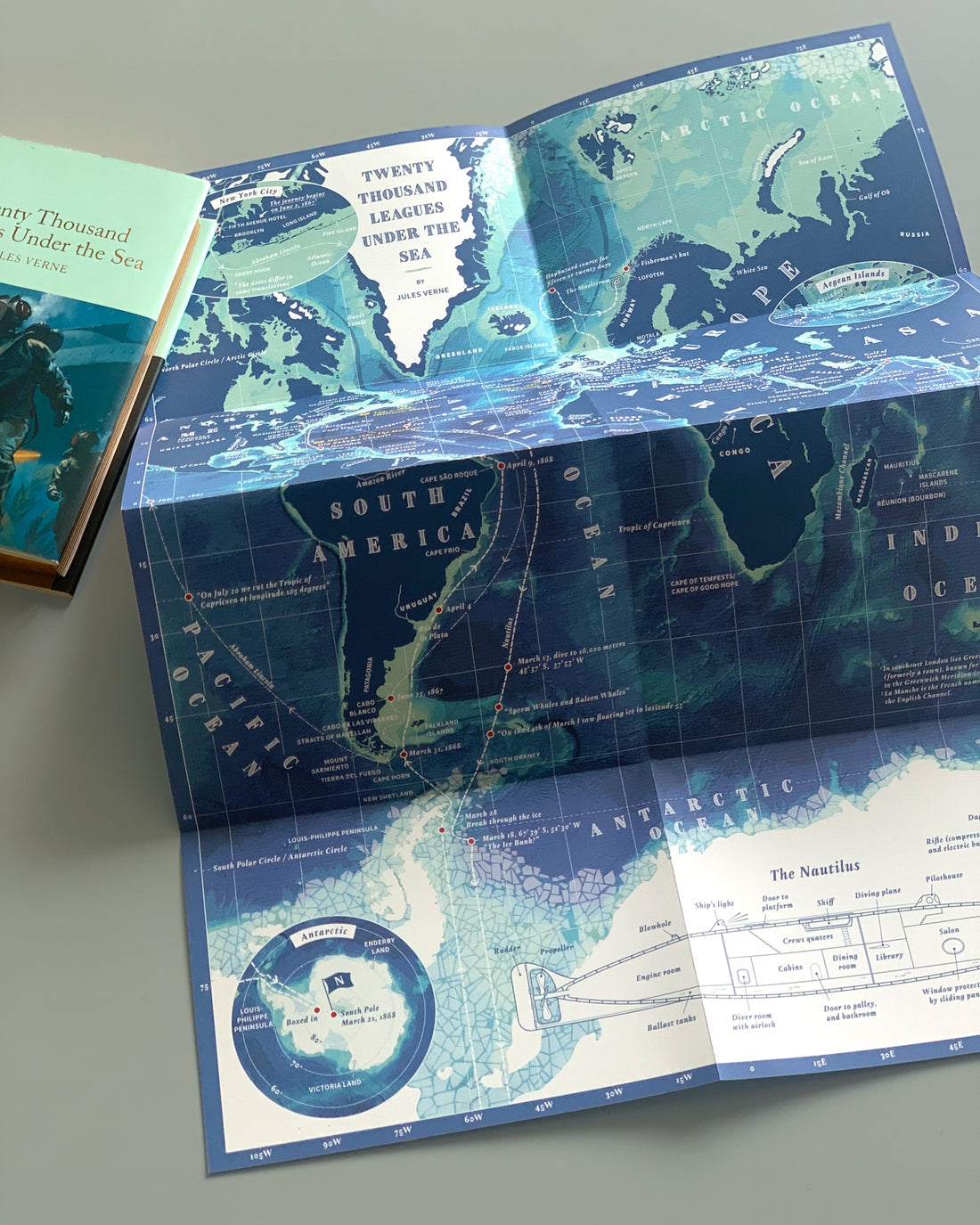I've long admired the engraved map by J. Sédille included in Hetzel's 1871 edition of Twenty Thousand Leagues Under the Sea. I love that it is drawn in a Mercator projection, the classic cylindrical map type where all longitudes are straight lines. This type of map was easy for sailors to use in the past, requiring only a compass and a ruler to navigate in the right direction. I think it's entirely appropriate to use such a map for this book, but as always with the Mercator projection, areas near the poles are disproportionately enlarged.

J. Sédille - Engraving from an edition of 20000 Lieues Sous les Mers.
Sédille's map is fantastically beautiful, but unfortunately, it is not very detailed—for example, the route of the frigate Abraham Lincoln is not marked. Another charming detail—which I immediately noticed because I live in Stockholm—is that the city is misplaced. On Sédille’s map, Stockholm is located where Oslo, the capital of Norway, should be :) I didn’t include either Stockholm or Oslo on my map since they aren’t mentioned in the book, but I did include Motala in Sweden, where, according to Verne, the submarine's spur was manufactured. Motala Workshops was founded in 1822 and is still active today.

J. Sédille - map detail
When I decided to create a new map for the book, I wanted to use Sédille's work as a base but make it more precise and fill in all the places mentioned in the text. To make it as accurate as possible, I used a GIS program where I input the positions and routes from the book, along with detailed ocean depth data from gebco.net (a fantastic resource—check out their website if you're curious!). In the program, I was able to recreate a map projection similar to Sédille's but with much greater precision.

Map: The South Pole, gebco.net
In addition to using GIS data, I have been looking for locations in many beautiful maps from the relevant time period. Here's a screenshot from the work on the map, the route through Torres Strait.

Map from The Surveyor General’s Office Brisbaine, 1892

Jules Verne mentions an incredible number of animal and plant species in his book, and even more geographical locations. So many, in fact, that I couldn't fit an index of all these places as I usually do. But I still hope that readers will be able to follow the journey through the map and enjoy the captivating adventure that Verne created.
I used Frederick Paul Walter's translation of the book, which I think is well done. Unfortunately, some chapters are missing in other translations.
We'll see what the next Jules Verne map will be; Journey to the Center of the Earth would be interesting to make!


1 comment
Your map was great for Twenty Thousand Leagues! So well done. Thank you for making these. Although not a popular book, I think “The Will of an Eccentric” would be a great map if you like Jukes Verne (https://www.amazon.com/gp/aw/d/B0DSTZV653/ref=tmm_kin_swatch_0)